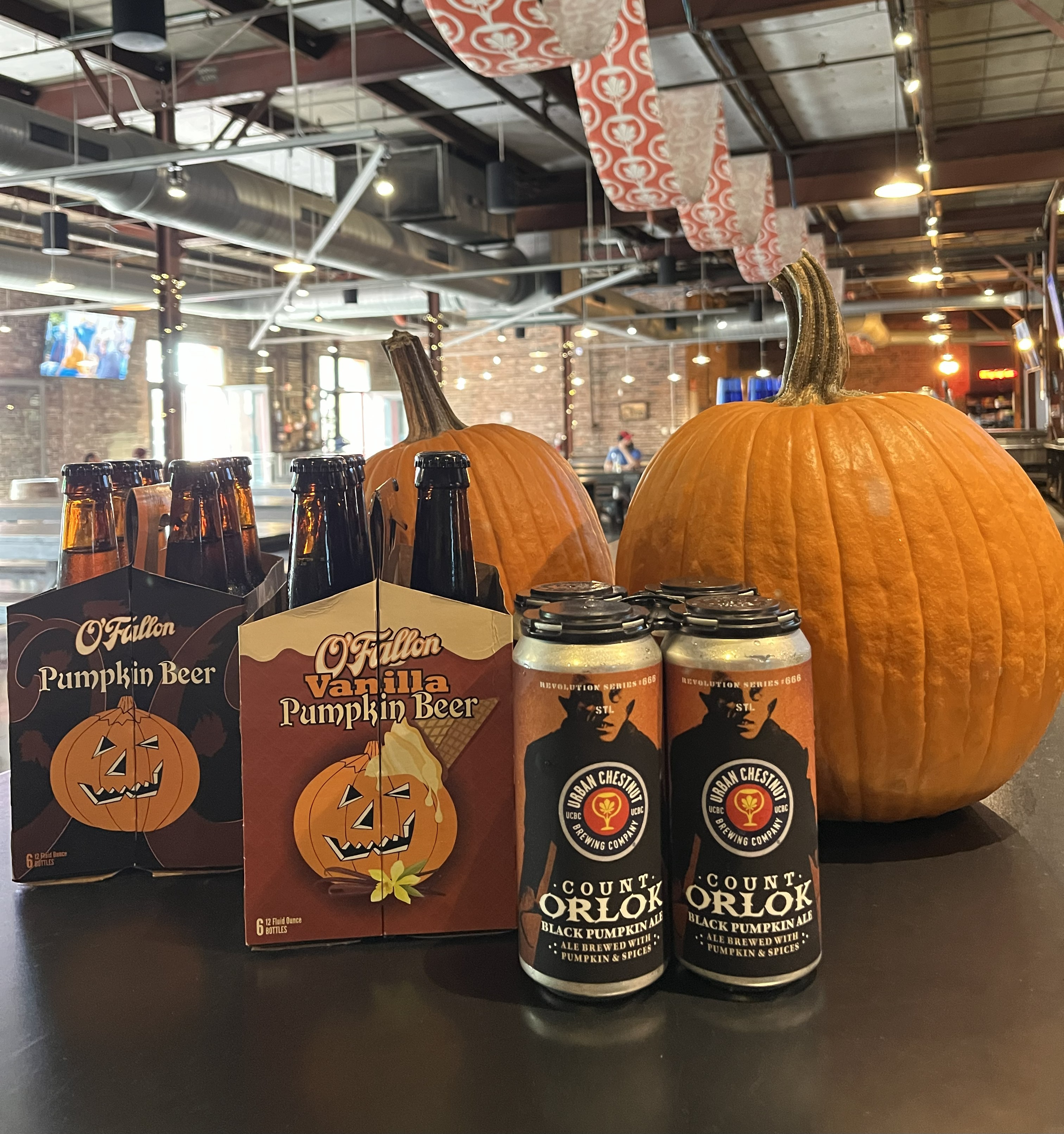
St. Louis Beer Blog: Pumpkin Beers
As St. Louis weather begins to resemble fall, we can now turn our attention to pumpkin beers. Beer made with pumpkin is not a new phenomenon in America; it was a common adjunct in early colonial America, particularly where barley was in short supply.
Not long after, the use of pumpkins in beer became less popular (which coincided with beer falling out of favor in general.*). It wasn’t until 1985 when Bill Owens of Buffalo Bill’s Brewery in California came up with the idea to brew something that felt like fall and added pumpkin to an amber ale. However, as beer author Jeff Alworth noted:
“He learned then what brewers ever since have discovered: pumpkin doesn't have much of a taste. What, he wondered, would make it taste more pumpkin-y? Spices, of course (which actually makes it taste like pie, not squash, but let's not get too far afield). And thus was born an American tradition.”
Soon, pumpkin beers spread like wildfire, coinciding with fall’s annual pumpkin spice craze. By the early 2010s, they were all the rage, however, around 2015-16 the pumpkin beer ship “capsized in excess”.** Perhaps breweries produced way more than consumers demanded, or maybe it was the fact these beers were showing up on shelves in early August, when the weather resembles a furnace or a sauna in most places in the United States, and consumers don’t find a full-bodied spiced beer to be the thirst quenching drink they desire.
This brings us to Urban Chestnut during its first 2 or 3 years of existence. 2012/2013 was still the height of the pumpkin craze, and we were bombarded with questions of when we would brew our own pumpkin beer. Honestly, we weren’t all that interested at the time. First, it just didn’t seem to fit our portfolio; Oachkatzlschwoaf was a successful fall seasonal, and traditional German styles like Stammtisch and Dorfbier were just starting to establish themselves. Second, there were already breweries in St. Louis (O’Fallon and Schlafly for example) producing popular and well-crafted pumpkin beers so the market was already a bit saturated.
In the end, the demand was enough to change our mind in 2013, but we opted for something slightly different than the prototypical pumpkin beer. While the pumpkin spices remained, we went with a wheat beer that also featured roast malt to create a drier beer pumpkin beer. For fermentation, we used our house Weissbier yeast with its characteristic dry finish, to differentiate our pumpkin beer from others in the market. Moreover, we used “2nd generation” yeast i.e. it was previously used to ferment Schnickelfritz. Normally, this yeast produces clove-like aroma (desirable in Pumpkin Beer) and significant banana-like aromas (not all that desirable for a Pumpkin Beer). However, when using a 2nd generation pitch, the fruity notes tend to fade, making this yeast more ideal to use with this beer (all of the pumpkin pie-like clove notes without adding more clove!)
As for the name of the beer, we stuck with a German theme: Count Orlok from the 1922 F.W. Murnau Silent Film “Nosferatu”, a German version of Bram Stoker’s “Dracula”. The similarities to Dracula were a bit too much, causing the film to be found guilty of copyright infringement, and the film was ordered to be destroyed. A few copies survived, and it eventually became a public domain cult classic. To celebrate, we’ve shown this film in our Biergarten since 2013, and we’ve partnered with The Rats & People Motion Picture Orchestra to provide musical accompaniment***.
Ultimately, we listened to the pumpkin demands and we now offer a fairly wide range of pumpkin beer from the more subtle Count Orlok to the classic O’Fallon Pumpkin Ale to the more extreme O’Fallon Vanilla Pumpkin Ale (all brewed here at Urban Chestnut). Whatever your preference, as Jeff Alworth noted: “Don’t fear the pumpkin…Celebrate the season. Enjoy yourself”.
* Shortly after winning independence, anything typically British fell out of favor including beer. It took the mass immigration of Germans to America and their different kind of beer (aka Lager) that convinced Americans to once again take a shining to beer.
** I’m surprised it took me this long to make a reference to a Neil Young song.
*** In 2025, we’re showing the movie with musical accompaniment on October 22 and October 28, and then showing the 2024 released version of Nosferatu in the Biergarten on October 30th!
-Nate Brinson
Brewery Locations

The Grove
Bierhall
Our Grove location has plenty of space for your next large gathering, featuring delicious pizza and more from our friends at Fordo's Killer Pizza!

The Midtown
Biergarten
Serving your favorite burgers, fries and salads at our Midtown Biergarten! Try our new plant-based burger!

Hallertauer
Brauerei
Urban Chestnut's third brewery is located in the Hallertau region of southern Germany, near our Brewmaster's home town.


